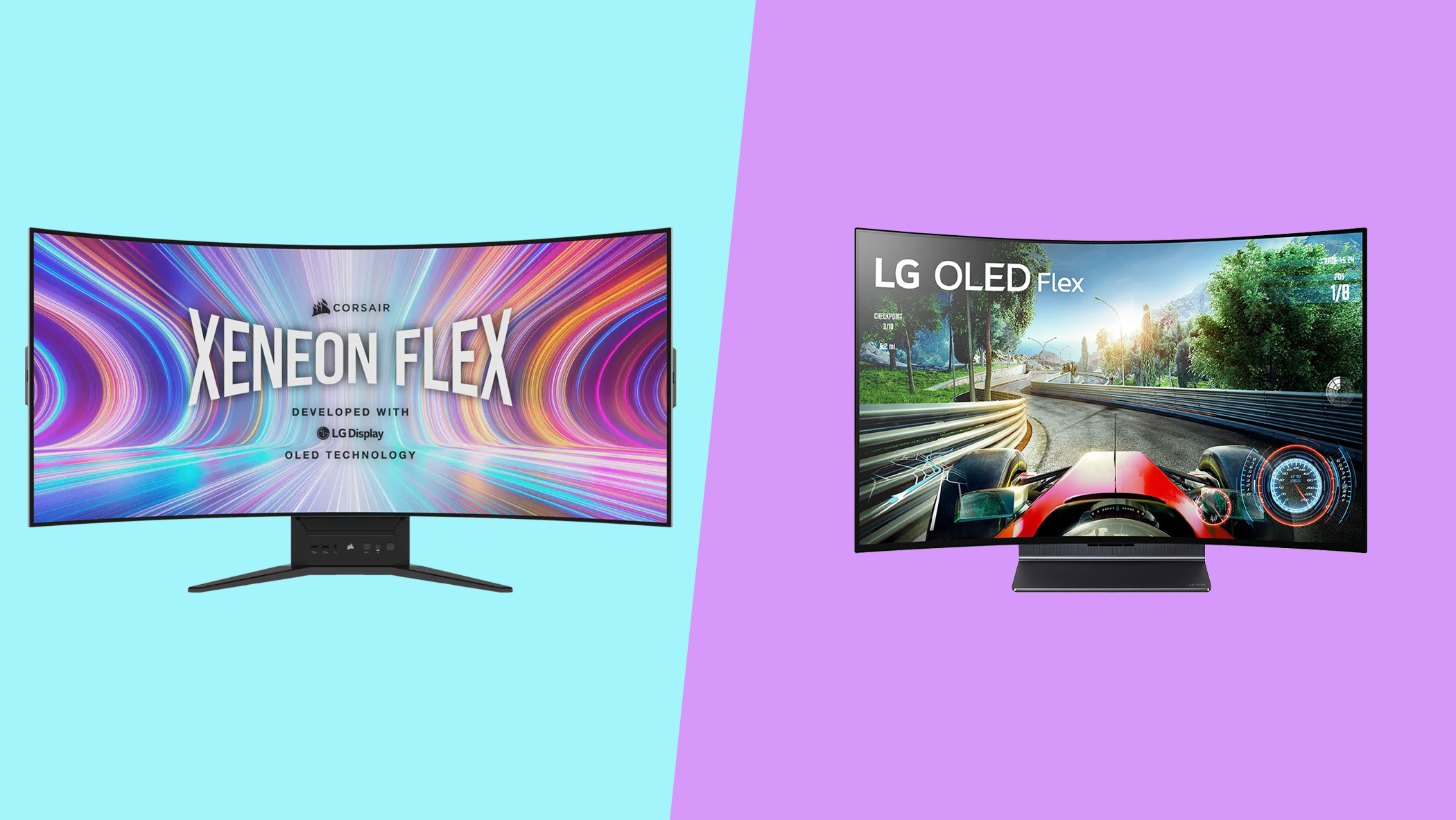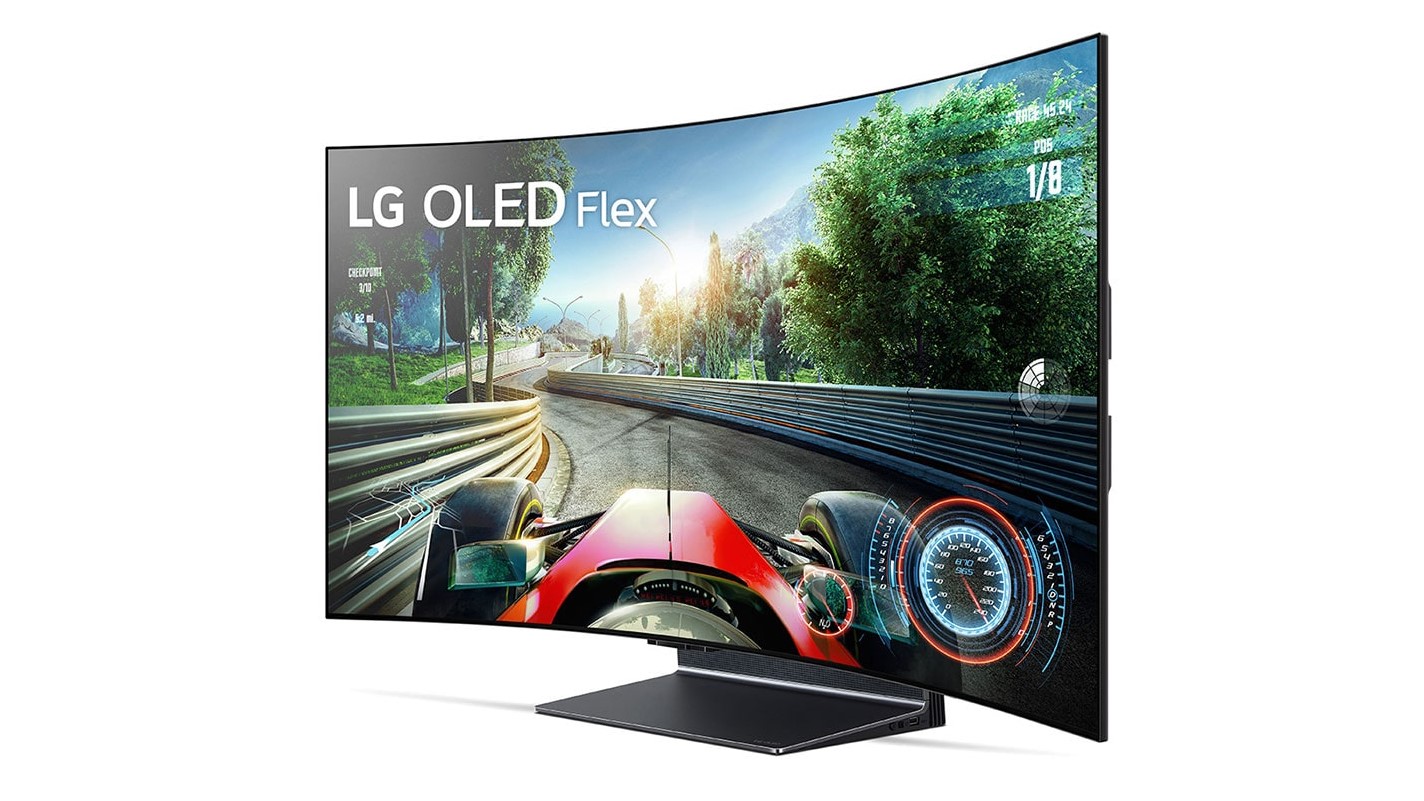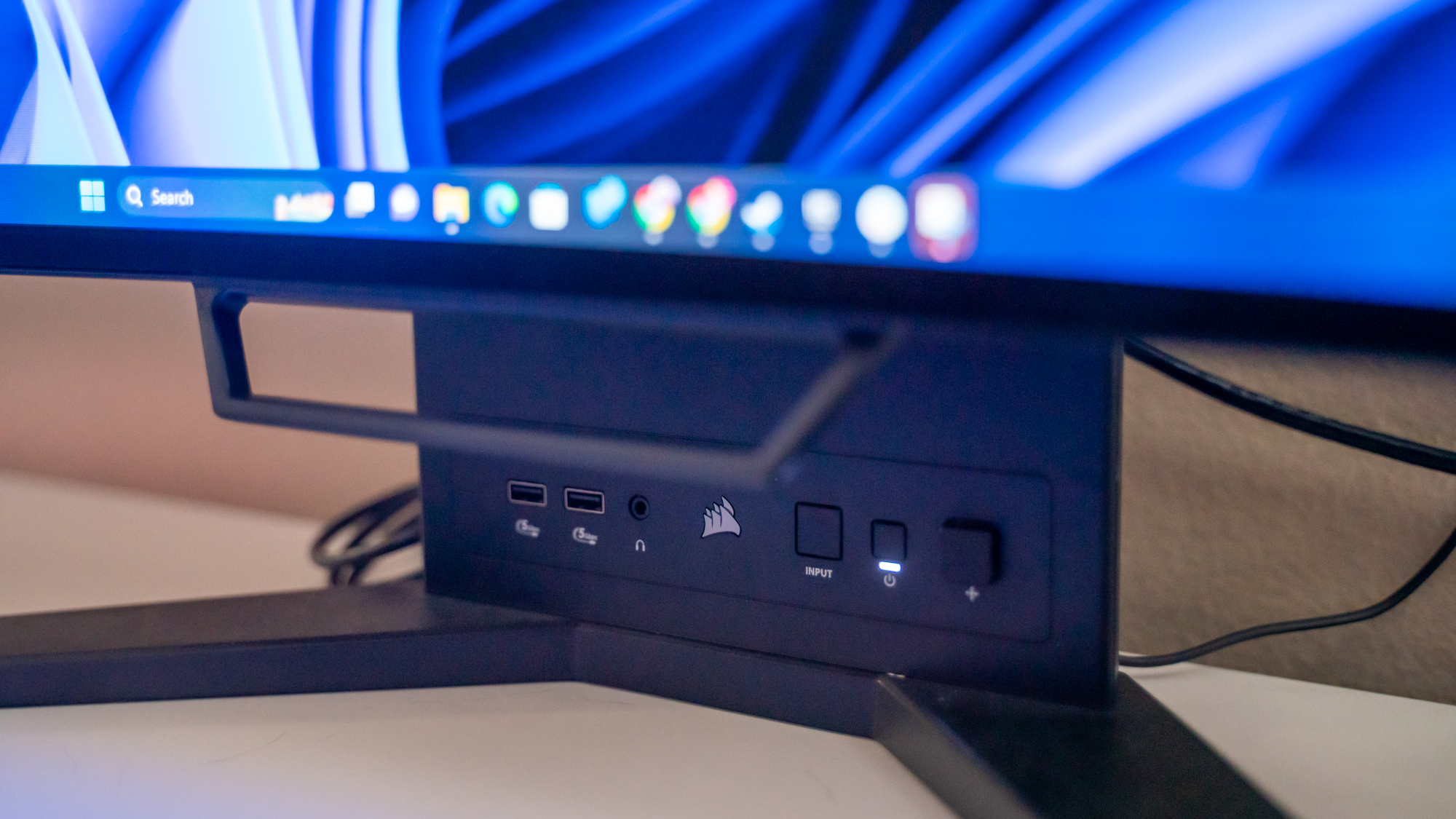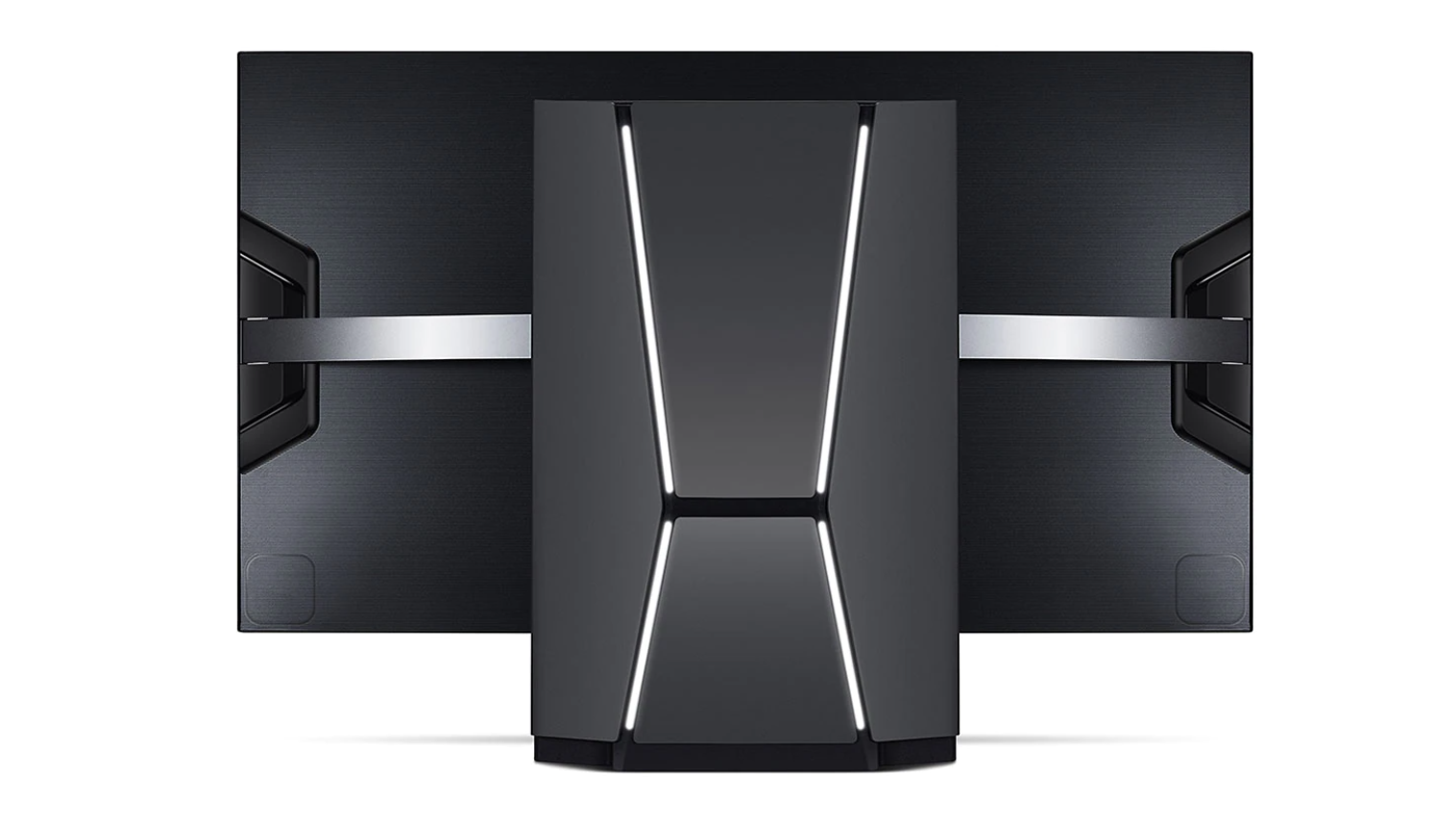
Flexible displays have officially entered the gaming monitor market with both the ultrawide Corsair Xeneon Flex and the auto-bending LG OLED Flex setting off what could be a very interesting competition – or at least set the tone for the future of the bendable gaming displays (ie whether or not they’ll eventually replace regular non-bendable ones as the monitor of choice for gamers).
So far, these two have proven that a bendable display is certainly a very useful form factor for those who take gaming seriously and often cross genres. The Corsair Xeneon Flex, the first bendable monitor I tested and reviewed, proved that some game genres and workloads are better on a curved screen while others are best viewed on a flat one, offering users the third versatile option of never having to pick between two display types.
And while at the time of writing, I’m only halfway through my testing of the LG OLED Flex, it already offers a nice window into the future if that versatility is taken to the next level.
If you’re looking to be an early adopter of the bendable display form factor, there aren’t a lot of choices yet. However, these two are already compelling entries and are worthy of consideration – which are among the best gaming monitors on the market in 2023. The question is which of the two should you go for? While they are both bendable gaming displays, they couldn’t be more different in implementation, features and even specs.
So, let's compare the Corsair Xeneon Flex and the LG OLED Flex side by side to help you decide between the two.
If a truly versatile and immersive gaming monitor with gorgeous picture quality and rich colors is what you’re seeking, the Corsair Xeneon Flex is worth it.
For
- Excellent picture quality
- Rich colors with deep blacks
- Fast response
Against
- Only tilt adjustments
- Bending mechanism clunky
- HDR on decreases contrast
With auto bending, amazing features, and a smart TV function, the LG OLED Flex is a bendable monitor that has it all. Too bad it's also eye-wateringly expensive.
For
- Auto bending
- Gorgeous colors
- Amazing features
Against
- 16:9 on a 42-inch is not great
- Expensive as heck
- Takes up space
Corsair Xeneon Flex vs LG OLED Flex: price
With new technology comes steep prices, and that’s the case with these two bendable monitors. Sadly, if you’re looking to be an early adopter, you’re going to have to make a sizable dent in that bank account.
Perhaps due to its more manual operation and WQHD resolution, the Corsair Xeneon Flex is the cheaper of these two displays. It’ll set you back a hefty $1,999.99 / £2,099.99 / AU$3,299.99 still, which is an eye-watering amount for most gamers, but is still more affordable than LG's offering.
The LG OLED Flex (LX3), after all, will have you bawling and leave your piggy bank in pieces at $2,999 / £2,999.98 (about AU$4,500), which is around how much a high-end TV will cost these days. To be fair, it's also a smart TV, and it automates the bending process, making it more convenient to use.
Still, if you’re comparing these prices to some of the best ultrawide displays, which tend to be pricey themselves, these two feel like luxury purchases. Some of the priciest gaming ultrawides are the Acer Predator CG7 and Gigabyte Aorus FV43U, and those only cost $1,199.99 (£1,166.80, around AU$1,800) and $1,100 / £1,000 / AU$1,699 respectively.
Corsair Xeneon Flex vs LG OLED Flex: design

As I mentioned before, the only big thing these two displays have in common is that they’re both bendable. Outside of that, they’re more different than they are the same, which luckily should make choosing a lot easier.
The Corsair Xeneon Flex is a massive 45-inch ultrawide monitor with a 21:9 aspect ratio. Despite its size, it’s actually surprisingly lighter than it looks at only 13.9 pounds (6.3kg), but it’s got enough hefty to it that the whole thing doesn’t move when you make adjustments. And by adjustments, I mean bending the panel itself, which you’ll have to do manually by grabbing the two handles on either side of the display and pushing or pulling.
It can go from flat to an immersive 800R, but for it to do that, you will have to do all the work. It also feels clunky, which can be a little unnerving in the beginning when you're bending it.
Ergonomics also isn't a priority here, with its articulation limited to just a tilt range of 22 degrees, although I do appreciate the fact that the ports (two HDMI 2.1, one DisplayPort 1.4, and one USB Type-C DP Alt-Mode) conveniently located right on the wide stand where they’re more easily accessible. Plus, this integrated stand also has two USB 3.2 and one 3.5mm audio up front for connecting peripherals.

Meanwhile, the LG OLED Flex, aka the (self-proclaimed) world's first bendable 42-inch OLED screen, is smaller and not as wide at 42 inches and with a 16:9 aspect ratio. Despite being smaller, it’s a lot heavier at 49.8 pounds (22.6kg). Not to worry; the setup might be a bit of a back-breaker, but you need not worry about it post-setup. That’s because it has auto bending, which means you can control its curvature via the included remote or the OSD menu.
The panel can go from flat to 900R, and there are 20 levels of curvature you can easily choose by just pressing a button, making the process a lot more streamlined.
The stand and mount, which come already attached to the panel, allows more articulation so you can adjust the height up to 140mm and tilt the screen 10 degrees forward or 5 degrees backward, which I really appreciate. The location of the ports – on either side of the stand – is a little bizarre, but it makes them accessible so I’m not complaining.
Corsair Xeneon Flex vs LG OLED Flex: features

The slightly cheaper Corsair Xeneon Flex is a little limited. Besides the USB hub on the front of its stand, it has FreeSync Premium and is G-Sync compatible.
Meanwhile, the LG OLED Flex not only has adaptive sync, but it comes with a whole slew of other features as well. That includes a remote, a built-in gaming mic, 40W speakers with Dolby Atmos, and customizable RGB lighting in the back with video and sound sync. It’s also a smart TV and works with Google Assistant, Alexa, Apple Airplay2, and Homekit.

Corsair Xeneon Flex vs LG OLED Flex: specs
Having a 1440p panel allows the Corsair Xeneon Flex to be a little more affordable, and while you are only getting 83 pixels per inch (PPI), the visuals are still plenty sharp for gaming, streaming content, and productivity.
And it does have some gaming advantages of the LG with its 0.03 GtG response time and 240Hz refresh rate. If you’re into esports or faster paced games, you’ll appreciate this. Since it is an OLED display, the colors are vibrant and the blacks are deep here.
Plus, you’re getting 100% (sRGB) and 98.5% (DCI-P3) color gamut and DeltaE<1 color accuracy, which means that this is just as good for video editing as it is for gaming. Sadly though, while it reaches 1,000-nit peak brightness, its HDR10 isn’t anything to write home about.
Being a 4K display, on the other hand, the LG OLED Flex is understandably more expensive. That also means you’re getting a higher pixel density of 104.9 PPI. Its response time and refresh rate, however, slower than the Corsair’s at 0.1ms and 120Hz respectively.
Obviously, those aren’t bad numbers either and more than good enough for gaming. LG isn’t very specific about color coverage so the only information being offered about its color coverage is that it’s got a “Wide Color Gamut” coverage. It is an OLED panel as well though so you’re getting deep blacks and rich colors.
Which bendable monitor is right for you?
Choosing between the Corsair Xeneon Flex and the LG OLED Flex shouldn’t be hard seeing as despite both being bendable gaming monitors, they’re different enough from each other.
The more affordable Corsair Xeneon Flex focuses on gaming primarily, more specifically fast gaming so while it doesn’t have as many extra features as the LG option, it has all the tools you need for a smooth gaming experience, no matter the title. It also offers the right color gamut and color accuracy that make it a great video and photo editing tool while its ultrawide aspect ratio also serves productivity workloads well, especially those who often multitask.
The bending mechanism is a little clunky and all manual, which means you’ll have to adjust the curvature manually yourself, which can be a little inconvenient. But it is something you get used to and get better with practice.
The premium LG OLED Flex, on the other hand, is a gaming display and a smart TV in one. It’s not an ultrawide display, but it comes with a whole lot of features that will allow you to go from working to gaming to streaming with just the press of a button (thanks in large part to the included remote). It’s not the best for multitasking, especially when you’re working, because of that aspect ratio and screen size combo, but it’s also not impossible to do work on. It’s also loaded with gaming and smart features.
The bending process on this is incredible. You’ve got 20 different curvature levels that you can choose with just the press of a remote button or on the OSD menu. In other words, the process is automated, making it incredibly convenient.
Which of these two is right for you? That depends on your needs, priorities, and budget, but if you want a gaming monitor that you can also create content on, go with the Corsair Xeneon Flex. If you want a full-featured display that’s focused on post-work entertainment, the LG OLED Flex may be worth the splurge.







